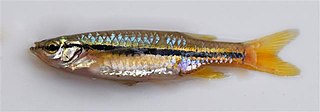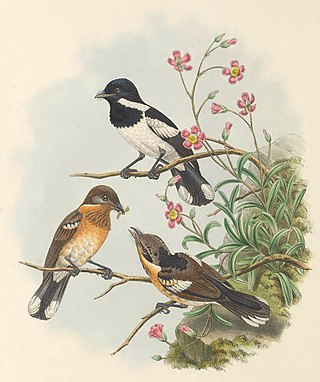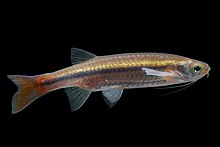
The Western Ghats, also known as the Sahyadri mountain range, is a mountain range that covers an area of 160,000 km2 (62,000 sq mi) in a stretch of 1,600 km (990 mi) parallel to the western coast of the Indian peninsula, traversing the states of Gujarat, Maharashtra, Goa, Karnataka, Kerala and Tamil Nadu. It is a UNESCO World Heritage Site and one of the 36 biodiversity hotspots in the world. It is sometimes called the Great Escarpment of India. It contains a very large proportion of the country's flora and fauna, many of which are endemic to this region. The Western Ghats are older than the Himalayas. They influence Indian monsoon weather patterns by intercepting the rain-laden monsoon winds that sweep in from the south-west during late summer. The range runs north to south along the western edge of the Deccan Plateau and separates the plateau from a narrow coastal plain called the Western Coastal Plains along the Arabian Sea. A total of 39 areas in the Western Ghats, including national parks, wildlife sanctuaries and reserve forests, were designated as world heritage sites in 2012 – twenty of them in Kerala, ten in Karnataka, six in Tamil Nadu and four in Maharashtra.

The bearded vulture, also known as the lammergeier and ossifrage, is a very large bird of prey in the monotypic genus Gypaetus. Traditionally considered an Old World vulture, it actually forms a separate minor lineage of Accipitridae together with the Egyptian vulture, its closest living relative. It is not much more closely related to the Old World vultures proper than to, for example, hawks, and differs from the former by its feathered neck. Although dissimilar, the Egyptian and bearded vulture each have a lozenge-shaped tail—unusual among birds of prey. It is vernacularly known as Homa, a divine bird in Iranian mythology.

The bearded seal, also called the square flipper seal, is a medium-sized pinniped that is found in and near to the Arctic Ocean. It gets its generic name from two Greek words that refer to its heavy jaw. The other part of its Linnaean name means bearded and refers to its most characteristic feature, the conspicuous and very abundant whiskers. When dry, these whiskers curl very elegantly, giving the bearded seal a "raffish" look.

The common bulbul is a member of the bulbul family of passerine birds. It is found in north-eastern, northern, western and central Africa.

Esomus, or flying barbs, are freshwater fish native to South and Mainland Southeast Asia. They are closely related to the genus Danio and are distinctive for their extremely long barbels.

The Bornean bearded pig, also known as the Sunda bearded pig or simply bearded pig, is a species in the pig genus, Sus.

The Indian flying barb, historically flying barb, is one of the species known in the group flying barbs owing to their extremely long barbels. It was discovered as long ago as 1822 by Hamilton. However, it is rarely seen in aquaria. It is found in Myanmar, Nepal, Pakistan, Sri Lanka and India, it is found in many of the same localities as Danio rerio and Danio dangila, an example being the Jorai Rivulet, a tributary of the Sankosh river in Coochbehar district, West Bengal, India. The rare fish Borellius spp. is locally named "Boirali maach".

The Nilgiri marten is the only marten species native to southern India. It lives in the hills of the Nilgiris and parts of the Western Ghats. With only around a thousand members left it is listed as Vulnerable on the IUCN Red List.

Mullus barbatus is a species of goatfish found in the Mediterranean Sea, Sea of Marmara, the Black Sea and the eastern North Atlantic Ocean, where its range extends from Scandinavia to Senegal. They are fished, mostly by trawling, with the flesh being well regarded. The International Union for Conservation of Nature has assessed their conservation status as being of "least concern".
The mimic tree rat, rock-dwelling giant rat, or rock-dwelling rat is a species of rodent in the family Muridae found in West Papua, Indonesia and Papua New Guinea.

The Solomons monarch, also known as the black-and-white monarch, is a species of bird in the family Monarchidae. It is endemic to the Solomon Islands archipelago. Its natural habitat is subtropical or tropical moist lowland forests. It is threatened by habitat loss.
Malapterurus barbatus is a species of electric catfish native to Guinea, Sierra Leone and Liberia. This species grows to a length of 21.5 centimetres (8.5 in) SL.

Hypselobarbus carnaticus, also known as the Carnatic carp, is a species of cyprinid fish from the Western Ghats in India where it inhabits riffles and larger pools in rapidly flowing rivers and streams. It prefers to shelter underneath boulders and overhangs. This species can reach a length of 60 centimetres (24 in) TL and has attained a maximum reported weight of 12 kilograms (26 lb). It is a commercially important fish and is also farmed.
Cyprinus barbatus is a species of ray-finned fish in the genus Cyprinus. It is endemic to Lake Erhai in Dali, Yunnan, China. It is negatively impacted by agricultural and domestic pollution and introduced species. The IUCN considers it as critically endangered and possibly extinct, but records as recent as the 2000s (decade) show that it likely does survive.

Esomus metallicus, sometimes known as striped flying barb, is a species of cyprinid found in Southeast Asia, including the Salween, Mekong, and Chao Phraya river systems. It is found in fresh and brackish water. It grows to 7.5 cm (3.0 in) standard length.

The Burmese flying barb is a species of cyprinid fish endemic to Myanmar.

Esomus altus is a species of cyprinid endemic to Myanmar.
Esomus caudiocellatus is a species of cyprinid found in Irrawaddy River and Sittaung River drainages to the lower Salween basins in Myanmar. It may also be found in nearby drainages on China and the Malay peninsula of western Thailand and northern Malaysia.
The Mekong flying barb is a species of cyprinid found in Mekong river basins in Thailand, Laos, Cambodia and Viet Nam.














